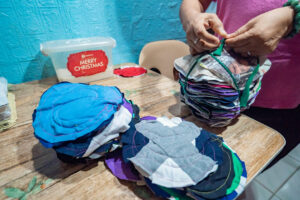It should be clear enough to us that our biggest problem is the high incidence of poverty and involuntary hunger among our people. Secretary Frederick Go, the President’s key economic adviser, says he is focusing on bringing in more investments in manufacturing in order to create more jobs. “Make more” is his slogan.
As I have pointed out earlier, it is difficult to generate investments in manufacturing because our energy costs are just too high. And our labor cost, because of our high cost of living, is not competitive. Our facility with the English language is becoming less and less a competitive advantage. We cannot compete with oil producers like Indonesia and Malaysia (with its possession of our share of mineral-rich and oil-producing Sabah). Add to this, of course, is the waste of taxpayers’ money by our irresponsible and corrupt politicians.
Sadly, our economy is consumer-led, largely from the sacrifices families make when members go overseas in order to be able to send money home. The social costs are high, with many families broken up by the separations. Children grow up dependent on electronic gadgets to stay in touch with their mothers who are taking care of other people’s children in other countries. Marriages often break down.
My rich background as a probinsiyana (country girl) who has studied and worked in highly urban settings has given me insights into our poverty situation, which is mostly in the rural areas, and mainly in the Visayas and Mindanao. As in urban settings, rural families can hardly live above the poverty line when only one parent (usually the husband) is able to make a living. Wives-mothers who do not go abroad to work as domestic helpers have at least three or four children. Those who do not have access to running water at home use up a lot of their time and energy fetching water from a distance, or from a neighborhood water well. Those who have young children have to take care of them full-time and are unable to contribute to the family income. Farmers earn too little after middlemen extract payments for advances for fertilizers and other farm inputs. Small-scale fishers catch too little after illegal fishing boats have scoured the municipal waters and harvested too much of the fish, big and small. It is ironic that those who produce our food can barely have enough to eat!
The most prosperous rural families I have encountered in my adventures have been those in which the women are able to add to the family income. These families have running water at home and the neighborhood has a day-care center. Moreover, there is a small value-adding enterprise that allows the women to work on a piecemeal basis. This enables them to get their housework done while working part-time in a nearby processing business. They do not need to abandon their families to get jobs in the big cities or overseas.
The best example of a prosperous rural community that I can think of is that of a barangay in Bohol where the men were small-scale fishermen. The women worked on looms that produced wall coverings for export to New York City. The mayor had an exporter friend in Cebu City whom she persuaded to subcontract production to one of her barangays. The “factory” was made of nipa and was right in the center of the barangay. Because of their generous incomes, the women were able to fund their own day-care center which one of the men who happened to be a carpenter built. They only asked the government to provide them with a teacher. They also built what they called their “multipurpose,” a hall which functioned as a conference room, dance hall, and chapel. Meanwhile, in a barangay in Cavite, the community enterprise consisted of dish rags produced from fabric cut-offs from a T-shirt factory. Again, the women earned on a piecemeal basis. They did not have to neglect their multiple tasks as homemakers, wives, and mothers. I was really impressed at how healthy and happy they and their families appeared.
Perhaps we should really have a think tank that brainstorms on rural-based enterprises which mobilize women as workers who can add to the family income. This, to me, is the most sensible and practical way for us to reduce our poverty incidence. Higher family incomes mean better food for our children; and hopefully, better performance in math, sciences, and reading comprehension.
The government and the private sector, together with local governments and the Department of Trade and Industry can strategize together and coordinate campaigns to make these happen at the grassroots. We need to think small.
“Infrastructure” does not only call for highways, bridges, and airports. It should mean investments in running water in all barangays, day-care centers, and subcontracting value-adding enterprises in rural areas, particularly in the Visayas and Mindanao. There should be links between rural communities and urban enterprises.
Teresa S. Abesamis is a former professor at the Asian Institute of Management and Fellow of the Development Academy of the Philippines.
